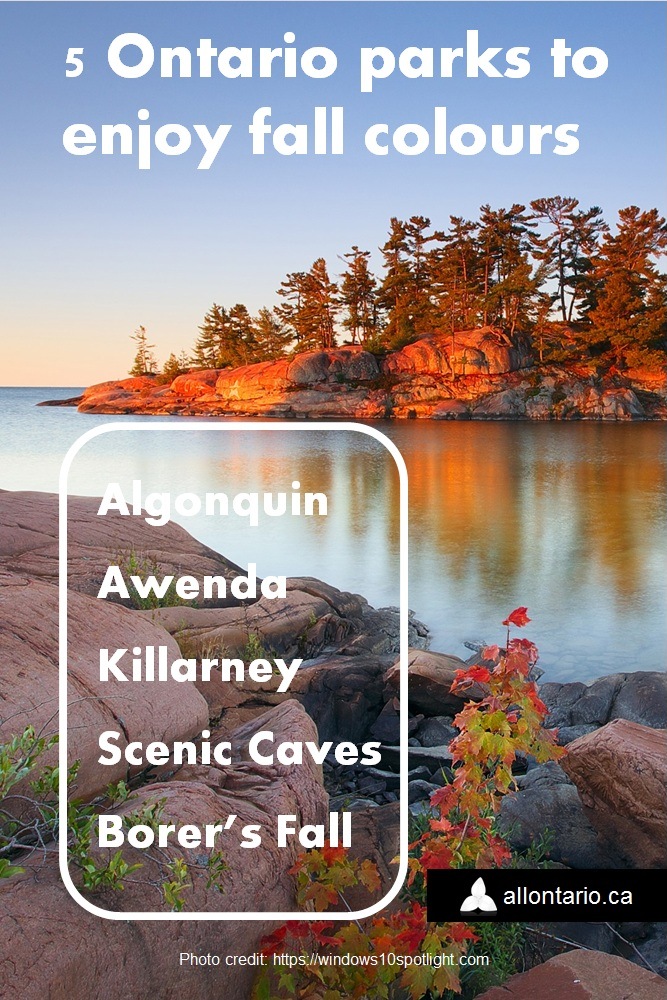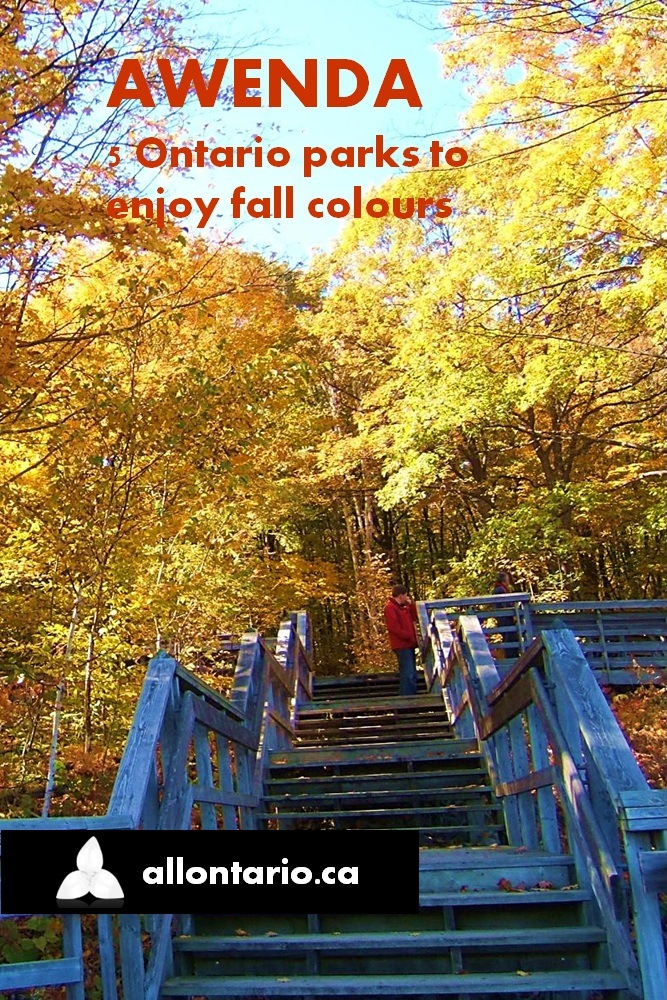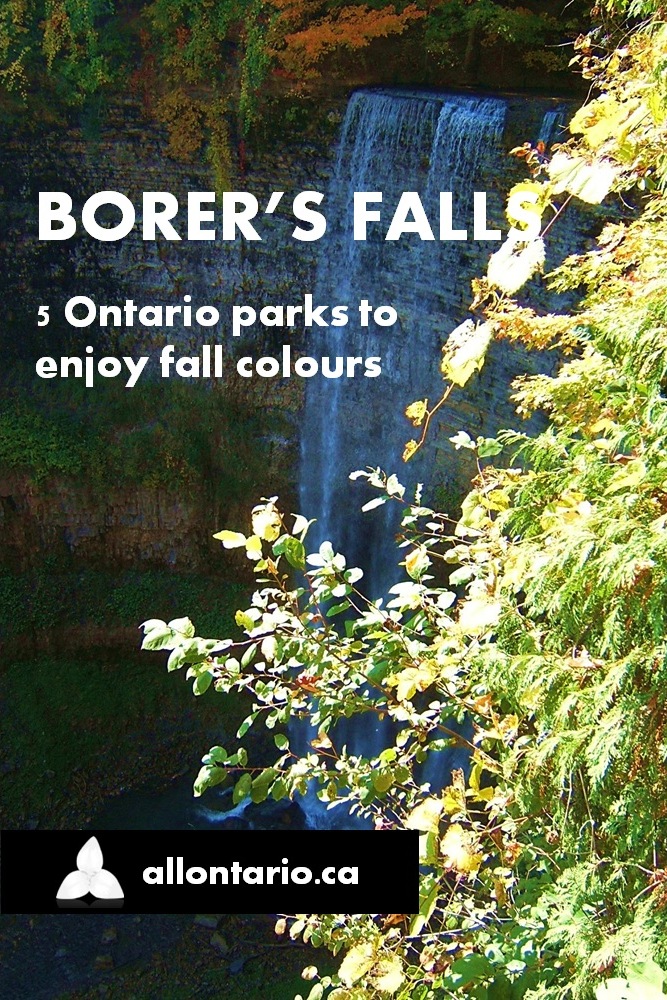Throw on your sweaters, get a mug of hot apple cider, and visit the best places in Ontario to enjoy a brief period of spectacular fall foliage. There are plenty of places throughout the province with incredibly beautiful sites and here are only five of them.
Algonquin Park
Between mid-September and mid-October, Algonquin Park is ablaze with vibrant colours. This brief explosion of reds, oranges, and yellows makes the landscape so incredibly beautiful that it takes your breath away.
The fall colours are spectacular, ranging from bright yellow on some trees through orange to fluorescent red-orange on others. In some trees, all colours above can be seen at the same time.
The best time to visit Algonquin Park
Algonquin Park’s fall colour season is a dazzling spectacle to behold. In Ontario, “leaf peeping” tourism is one of major contributors to economic activity attracting nearly a million visitors a year. This visitor activity occurs between the beginning of colour changes and the onset of leaf fall.
Usually, the best fall colour watching in Algonquin Park is expected from mid-September to mid-October. You have to keep in mind that because of the Park’s higher elevation, up to almost 600m above sea level, fall colour occurs several weeks earlier than in Toronto (75m above sea level) or Ottawa (70m above sea level).
The Highway 60 Corridor
The Highway 60 Corridor provides easy access to the Algonquin Park scenic vistas for keen “leaf peepers”. Highway 60 is a provincial highway open year-round that passes through the southern portion of Algonquin Park. The Corridor is measured by kilometre markings from west (West Gate [km 0]) to east (East Gate [km 56]).
Hardwood Lookout – the easiest point to enjoy fall colours
The easiest point to enjoy a spectacular panorama of fall colours in Algonquin is the Hardwood Lookout. It’s located at kilometer 13.8 on Highway 60, just a short distance from the Tea Lake Campground.
This short hike is less than one kilometer in length round trip but is a steady climb up to the scenic lookout point. The view over the trees and Smoke Lake are fantastic! The trail runs in a counter-clockwise direction, but if you do this hike in a clockwise direction, the lookout is very close to the trailhead and much less strenuous.
Algonquin Park Fall Colour Report
The exact peak of autumn colours is difficult to predict because it’s subject to numerous factors such as daylight length, moisture, temperature, frost, wind, heavy rain and others.
If you plan to visit Algonquin at the most brilliantly coloured time of the year, check the Algonquin Park Fall Colour Report to choose the best dates.
For live video you can watch the Algonquin Park Webcam located at the Algonquin Park Visitor Centre.
Awenda
Awenda possesses one of the most outstanding deciduous old growth forests in the province. The forest area covers approximately 243 ha in the south-eastern section of the park. The giant maple trees growing there are between 220 and 270 years of age. These maples and the red oak trees appear to be about the same height and diameter, so you might think that they would be the same age. But they aren’t! The oaks are only about 110 years old – half the age of the maples!
The word Awenda is Iroquoian. According to the Ontario Parks website, Dr. John L. Steckley, a retired Canadian scholar specializing in the Indigenous languages of the Americas provided the explanation of the park’s name: “The best translation for “awenda” would be a noun that means both ‘voice’ and ‘word.’ It was used with the verb root -io- ‘to be great’ (as in Ontario, ‘it is a great lake’) to create the word used for God: hawendio ‘his voice or word is great.’ As written, it would be a Northern Bear dialect word, the dialect of the people in the Awenda park area.”
Awenda Provincial Park was officially established in 1975, and now protects provincially significant geological, biological and cultural land features.
Killarney
Located on Georgian Bay, Killarney Provincial Park is one of prettiest parks in Ontario where you can get a full sense of the Canadian Shield, abundant fresh water lakes and a mix of deciduous and coniferous trees. It provides a wilderness experience like no other in Ontario. Spectacular park!
Killarney encompasses a vast wilderness area of wetlands, forests, mountains, and lakes where glacier-sculpted pink granite cliffs frame the coastline.
Clear topaz coloured lakes is one of the highlights of the backcountry. In the fall, ablaze deciduous trees and evergreens deliver incredible, breathtaking vistas.
Suitable for all skill levels, there are two ways to explore Killarney’s backcountry: the backpacking trail network and the canoe routes network.
A backcountry camper’s dream, Killarney is great for multi-day trips where you can explore the Georgian Bay shoreline as well as the beautiful lakes among the Jack Pine hills. It’s like travelling through a Group of Seven painting.
Please keep in mind that reservations are strongly recommended to ensure you secure a campsite. Campsite specific reservations are available online or by phone up to five months in advance of your arrival date for the La Cloche Silhouette hiking trail.
Borer’s Falls
Named after the Borer family who ran a sawmill there for over a century, the Borer’s Falls Conservation Area in Dundas, Hamilton, features a 15-metre-high (49ft) ribbon-style waterfall. It’s a very picturesque waterfall depicted on many Hamilton waterfall postcards over the years. The fall is located just right by the road. From where you park it is a short walk to be able to see it. You have to peer through the trees to see this impressive waterfall.
A stone bridge dating back to 1868 provides a great view of the top of the falls. On the east side of the ravine, a lookout offers equally spectacular views.
Our favourite time to visit Borer’s Falls Conservation Area is during the fall. In autumn, the Borer’s Falls (also known as Rock Chapel Falls) are a natural beauty with all the vegetation becoming ablaze along the open unguarded cliffs of the escarpment.
Looking down from the Dundas Peak top, you can enjoy the stunning panorama of the amazing array of fall colours. It takes about an hour to reach the Dundas Peak lookout but the views are well worth the walk. Sometimes, the hike is really challenging but yet fun. The stairs to get to the bottom are officially taken down.
Scenic Caves
If you plan to visit Scenic Caves (Blue Mauntain) in the fall, a spectacular adventure awaits you. Situated within one of Canada’s eighteen UNESCO biosphere reserves, Scenic Caves are steeped rich in history and heritage.
Set at the highest point of the Niagara Escarpment, Scenic Caves Nature Adventures is one of Canada’s “great natural wonders”. World class views!
You can step to the edge of the limestone cliffs to look down on 10,000 square kilometers of beautiful countryside and the deep blue expanse of Georgian Bay, over 300 meters below … … and make your Instagram feed blow up.
Beside magnificent fall colours vistas of the 200 year old forest, the following things are available at Scenic Caves:
- Self-guided walking trails through caves and caverns
- A historic village site, home of the “Deer Tribe” of the Petun First Nations people
- Eighteen unique geological rock features
- Numerous spectacular lookouts with panoramic views of 10,000 square kilometers of Georgian Bay
- Thunderbird twin zip line
- Tree top walk
- 15 kilometers of trails
Suspension footbridge
The longest suspension footbridge in Southern Ontario is only two hours from Toronto and it’s simply a must to visit. Cross that bridge when you come to it! Being suspended 82 feet above the forest floor provides the illusion of floating among the old growth forest. 360 degree views surround the suspension bridge and with a chain link fence running its length, no view is obstructed.
































